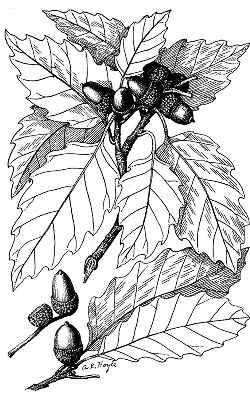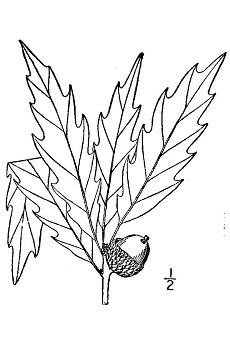
As Quercus acuminata, 19879 U.S.D.A. Forest Service Collection, Hunt institute
USDA: 5-9b
Sun Exposure: Full sun to part sun
Origin: Eastern and central Norh America, from New England and southern Ontario to northern Mexico, in dry, rocky sites, at 400 to 3000 feet elevation (120-900 m)
Growth Habits: Medium to large deciduous tree, 16 to 60 feet tall (5-18 m) or more in the wild, fast growing to 40 to 50 feet tall (12-15 m), and 40 to 60 feet wide (12-18 m) in cultivation; thin, light gray, rough and scaly bark; simple alternate leaves, 4 to 8 inches long (10-20 cm)
Flowers: Light yellow or greenish flowers
Watering Needs: Little to moderate water, needs good drainage, tolerates alkaline soils
Propagation: Seeds, should be fresh for best germination, sometimes difficult to transplant

Britton, N.L., and A. Brown. 1913. An illustrated flora of the northern United States, Canada and the British Possessions. 3 vols. Charles Scribner's Sons, New York. Vol. 1: 624. Provided by Kentucky Native Plant Society.
Fruiting Habits:
The Chinkapin Oak acorns are dark brown, borne singly or in pair, 0.5 to 1 inch long (12-25 mm). The cup covers almost half of the acorn. They mature in one season and are edible.
Desert-Tropicals is dedicated to provide gardening advice, gardening ideas, and information about flower of all kind for landscape and collections.We try to check carefully the identification of the plants on the illustrations as well as the other information from the page, but occasionally errors do occur. if you notice anything that needs to be changed please contact us.Thanks.
© 1998-2020 Philippe Faucon, All Rights Reserved.